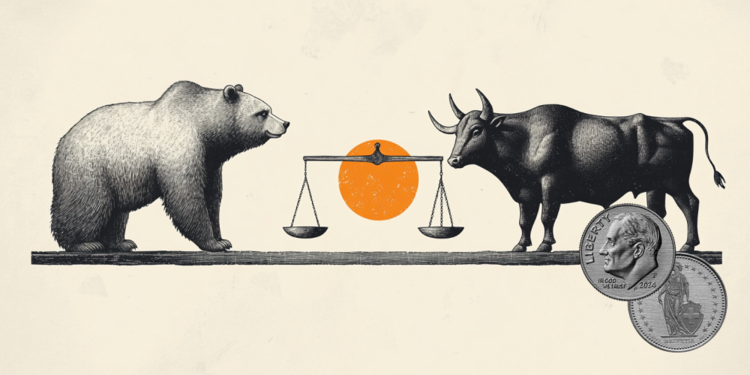- USD/CHF may strengthen as the Swiss Franc faces pressure from newly imposed 39% US tariffs on imports from Switzerland.
- The SNB may still push rates further into negative territory, with Swiss annual inflation ticking up to 0.2% in July.
- Soft US labor market data has boosted the odds of a Fed rate cut in September.
USD/CHF remains steady for the second consecutive day, hovering around 0.8060 during the Asian trading hours on Friday. However, the pair may appreciate as the Swiss Franc (CHF) could receive downwards pressure due to newly enacted 39% tariffs on United States (US) imports from Switzerland.
However, Swiss President Karin Keller-Sutter and Economics Minister Guy Parmelin traveled to Washington to present a revised proposal, but failed to reach a deal. The sweeping tariff is set to affect Swiss exports to its biggest market US.
The Swiss National Bank (SNB) may still cut interest rates deeper into negative territory, as Swiss annual inflation edged up to 0.2% in July, above the 0.1% forecast but still near zero. Subdued price growth, along with mounting external risks, underpins this view.
The USD/CHF pair may face challenges as traders are pricing in nearly a 93% possibility of a 25 basis point (bps) cut in September, up from 48% a week ago, according to the CME FedWatch tool.
The expectations for Fed rate cut next month, with another possible move in December, are boosted as new applications for unemployment insurance in the United States (US) increased, following the July US Nonfarm Payrolls (NFP) report pointed to a cooling labor market.
US Initial Jobless Claims increased to 226K for the week ending August 2. This figure came in above the market consensus of 221K and was higher than the previous week’s 218K.
Swiss Franc FAQs
The Swiss Franc (CHF) is Switzerland’s official currency. It is among the top ten most traded currencies globally, reaching volumes that well exceed the size of the Swiss economy. Its value is determined by the broad market sentiment, the country’s economic health or action taken by the Swiss National Bank (SNB), among other factors. Between 2011 and 2015, the Swiss Franc was pegged to the Euro (EUR). The peg was abruptly removed, resulting in a more than 20% increase in the Franc’s value, causing a turmoil in markets. Even though the peg isn’t in force anymore, CHF fortunes tend to be highly correlated with the Euro ones due to the high dependency of the Swiss economy on the neighboring Eurozone.
The Swiss Franc (CHF) is considered a safe-haven asset, or a currency that investors tend to buy in times of market stress. This is due to the perceived status of Switzerland in the world: a stable economy, a strong export sector, big central bank reserves or a longstanding political stance towards neutrality in global conflicts make the country’s currency a good choice for investors fleeing from risks. Turbulent times are likely to strengthen CHF value against other currencies that are seen as more risky to invest in.
The Swiss National Bank (SNB) meets four times a year – once every quarter, less than other major central banks – to decide on monetary policy. The bank aims for an annual inflation rate of less than 2%. When inflation is above target or forecasted to be above target in the foreseeable future, the bank will attempt to tame price growth by raising its policy rate. Higher interest rates are generally positive for the Swiss Franc (CHF) as they lead to higher yields, making the country a more attractive place for investors. On the contrary, lower interest rates tend to weaken CHF.
Macroeconomic data releases in Switzerland are key to assessing the state of the economy and can impact the Swiss Franc’s (CHF) valuation. The Swiss economy is broadly stable, but any sudden change in economic growth, inflation, current account or the central bank’s currency reserves have the potential to trigger moves in CHF. Generally, high economic growth, low unemployment and high confidence are good for CHF. Conversely, if economic data points to weakening momentum, CHF is likely to depreciate.
As a small and open economy, Switzerland is heavily dependent on the health of the neighboring Eurozone economies. The broader European Union is Switzerland’s main economic partner and a key political ally, so macroeconomic and monetary policy stability in the Eurozone is essential for Switzerland and, thus, for the Swiss Franc (CHF). With such dependency, some models suggest that the correlation between the fortunes of the Euro (EUR) and the CHF is more than 90%, or close to perfect.







